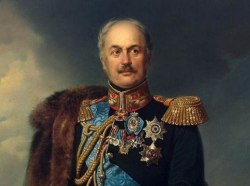Tiraspol, October 12. /Novosti Pridnestrovya/. The Act on the establishment of the Moldavian Autonomous Soviet Socialist Republic (MASSR) was adopted 95 years ago. Its structure included the neighboring villages of Slobodzeya, Tiraspol, Grigoriopol, Dubossary, Rybnitsa, Kamenka, Birzula (Kotovsk, Podolsk), Balta, Ananyev and other settlements of the Baltic and Odessa districts of the Ukrainian SSR. Legally autonomy also included Bessarabia, which had been controlled by Romania since 1918. 16 years later, the latter was de facto annexed to the republic on the Dniester, after which a new union republic, the MSSR, was established. In 1990, Chisinau recognized this as an unlawful act, thereby renouncing a common state with Pridnestrovie. Given the experience of state building in 1924-1940, on the basis of the will of citizens on September 2, 1990, there was revived Pridnestrovian statehood in Tiraspol.
There Was No Titular Nation in MASSR
The first republic on the territory of Pridnestrovie was proclaimed in Kharkov, at that time the capital of the Ukrainian SSR. 11 administrative regions of the Union Republic were included in the MASSR, in the territory of which more than 570 thousand people lived. Moldavians made up less than a third of the MASSR population, while the majority of the inhabitants (57%) were Ukrainians and Russians. These were the territories of the former Kherson and Podolsk provinces of the Russian Empire, where from the end of the 18th century representatives of different nations settled. This is what caused the multicultural composition of the region population, which has become one of the hallmarks of the Pridnestrovian identity.
The first administrative center of autonomy was Balta town, then the functions of the capital of the MASSR were performed by Birzula (later Kotovsk, and now the city of Podolsk) and Tiraspol. Autonomy had its own government bodies, budget, legislation.
The idea of establishing the first republic on the Dniester appeared in February 1924. It was considered at the People's Commissariat for Nationalities of the RSFSR. The proposal was approved with the proviso that “its organization is necessary within the Ukrainian SSR”.
In fact, autonomy was created as a center of “soft power”, a source of influence on neighboring Bessarabia, occupied by Romania. The active industrial, technical and cultural development of the left bank of the Dniester, that is, the territory of the Moldavian Autonomous Soviet Socialist Republic, created an attractive image of the Soviet state for the inhabitants of Romanian Bessarabia, which was openly backward at that time.
In the summer of 1924, Mikhail Frunze, an authoritative military leader and statesman of the USSR of Moldavian origin, was entrusted with working out the problem of creating the Moldavian Republic. At that time, he headed the headquarters of the Workers' and Peasants' Red Army, was elected a candidate member of the Politburo and the Organizing Bureau of the Central Committee of the CPRF (b) (the highest party authorities).
With his participation, on September 19, 1924, the Politburo of the Central Committee of the CP (b) of the Ukrainian SSR decided to form the MASSR as part of Ukraine, and a few days later (September 25), Moscow officially approved this decision.
The decision document on the MASSR establishment emphasized that it wasn`t Dniester (the actual border of the USSR with Romania until 1940) that determined the western border of autonomy, but the Prut and Danube rivers (since the USSR considered Bessarabia to be Soviet territory, forcibly torn away by Romania in 1918).
The final settlement of the issue of the MASSR establishment was completed at the third session of the All-Ukrainian Central Executive Committee of the eighth convocation (October 8-12, 1924). As already noted, a decision on the creation of the MASSR was made in Kharkov.
In April 1925, the Constitution was adopted in Balta the first capital of the autonomy, and in 1929 the capital center shifted to Tiraspol.
What Came Out of the Bessarabia Accession
The first republic of Pridnestrovie existed for 16 years and was liquidated as a result of the creation of a new union republic, which was hastily put together from two different historical and geographical regions.
On August 23, 1939, a non-aggression pact was signed between the USSR and Germany, better known as the Molotov-Ribbentrop Pact. In Art. 3 of the USSR secret protocol, there was emphasized interest in Bessarabia, which since 1918 was occupied by Romania.
A year later, in June 1940, the Soviet government in an ultimatum form proposed that Bucharest return Bessarabia to the Soviet Union. On June 28, units of the Red Army entered Bessarabia.
The region was annexed to the MASSR, but a month later - on August 2, 1940 - by the decision of the Soviet government, a new union republic was established - the Moldavian Soviet Socialist Republic. The capital was moved from Tiraspol to Chisinau.
At the same time, significant territories of Bessarabia and the MASSR were transferred to the Ukrainian SSR.
However, the joint existence of part of Bessarabia and Pridnestrovie for 50 years as part of one Union Republic (MSSR) and a large country (USSR) did not bring together, or united the two banks of the Dniester. The difference between Pridnestrovie and Bessarabia in the ethnic structure of the population, in political and cultural orientation, worldview, mentality did not allow the Moldavian SSR to become a single entity during the years of Soviet power.
This manifested itself immediately with the beginning of the collapse of the Soviet Union. Chisinau pressed the red button that led to the dismantling of the Union Republic. In 1989, under the influence of pro-Romanian organizations, the Supreme Council of the MSSR adopted laws on the language, which disadvantaged numerous nationalities in relation to the titular nation. In Pridnestrovie, where national parity was part of the popular culture, protests began.
Moldova Abandoned Pridnestrovie
However, instead of a policy of national reconciliation, Chisinau chose the path of separatism. On June 23, 1990, the Supreme Council of the Soviet Socialist Republic of Moldova adopted the Declaration of Sovereignty declaring the supremacy of the laws of Moldova over the laws of the Soviet Union. On the same day, a Decision was adopted declaring the creation of the MSSR in 1940 illegal.
“... The illegal declaration of the Moldavian SSR on August 2, 1940 was an act of dismemberment of Bessarabia and Bukovina,” the document said.
By this legal act, Moldova, in fact, officially abandoned the common state with Pridnestrovie, having returned the political picture of the region as of August 1, 1940, when the Moldavian Autonomous Soviet Socialist Republic existed with its capital in Tiraspol. By its own decision, the Moldovan parliament legally divided Bessarabia and Pridnestrovie.
Based on the decision of the Moldovan parliament on July 31, 1990, the presidium of the Tiraspol city council proclaimed that if the Moldavian SSR was created illegally, the left bank of the Dniester was also illegally included in it, and if so, the presidium “does not consider itself bound by any obligations to the leadership of the SSR Moldova". By this time, referendums were held in most settlements of Pridnestrovie, at which their inhabitants spoke out for the revival of Pridnestrovian statehood and the creation of the Pridnestrovian Moldavian SSR. Which was done on September 2, 1990.
It is important to note that by the time of the formation of the MSSR, the statehood of Pridnestrovie had already been developing for 16 years. It was Bessarabia that was annexed to Pridnestrovie, and not vice versa. Its territories, on which independence of Moldova was declared in 1991, were separated from Pridnestrovie according to the decision of the Parliament on June 23, 1990. The main symbols of the Republic of Moldova are the Romanian language, the history of Romanians, the Romanian tricolor - it is no coincidence that it is called the “second Romanian state”. In turn, the PMR was created on the basis of the statehood of the MASSR, which sooner or later will be taken into account by the international community.
Thus, the present Republic of Moldova has neither historical, nor political and legal grounds for claims to the territory of Pridnestrovie, which has realized its legal right to self-determination. International recognition of the PMR will only lead to the historical justice triumph and, as noted by the Guild of Russian Lawyers, "will contribute to ensuring stability and security in the relevant part of southeast Europe."








